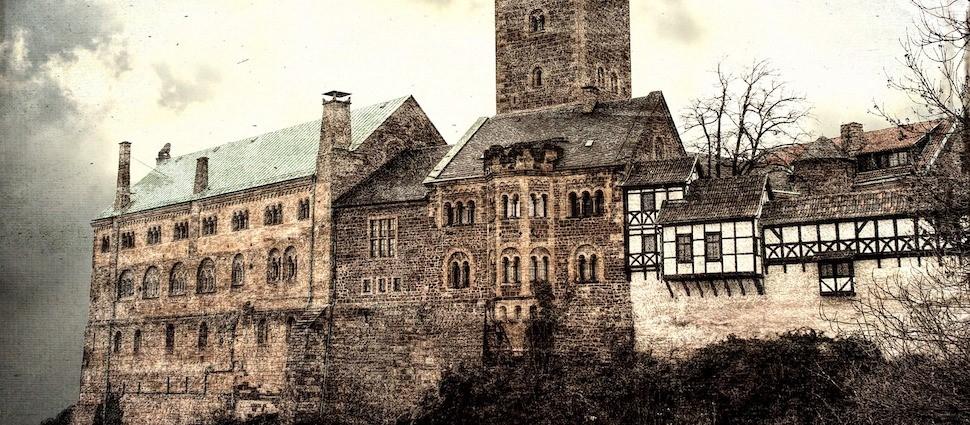Old Princeton: The Seminary's Influence Through Two Centuries (1812-1929)

On August 12, 1812, people crowded into the Presbyterian Church in Princeton, New Jersey, for the inauguration of Archibald Alexander as the first professor of a new school—a theological seminary. The sermon of the day was given by Samuel Miller, pastor of the First Presbyterian Church of New York City. Addressing the congregation and especially the one professor and the three students of the new school, Miller said:
Yes, brethren, we have more reason to rejoice, and to [congratulate] one another on the establishment of this seminary than on the achievement of a great national victory [the War of 1812 had started just two months earlier], or [Miller continued] on making a splendid addition to our national territory [nine years earlier in 1803 the Louisiana Purchase more than doubled the size of the United States]. [Dr. Miller continued] [This] is the beginning, as we trust, of an extensive and permanent system, from which blessings may flow to millions while we are sleeping in the dust.
Dr. Miller’s hope and trust were staggering, but not fanciful. God did bless “the ends of the earth” through the little seminary that began that day in 1812.
My two volumes on the history of Old Princeton Seminary were published in 1994 and 1996. The first, Faith and Learning, covers the years from the school’s founding in 1812 to 1868, and the second, The Majestic Testimony, from 1869 to 1929, the year the seminary was reorganized by the Presbyterian Church to weaken its conservative stance, maintained faithfully from its beginning 117 years earlier. Gresham Machen, Robert Dick Wilson, and Cornelius Van Til left to form a new seminary to continue the tradition of Old Princeton. They were joined the next year by another Princeton teacher, John Murray. 1929 was the watershed year in the history of Princeton Seminary. It was the end of Old Princeton after more than a hundred years of faithfulness to the scripture and the Reformed faith
The impact of Old Princeton continues, however, through the reprinting of many of the books of Alexander, Hodge, Warfield, Machen, and the other Princetonians. Charles Hodge’s Systematic Theology was used as a major text in several American seminaries as late as the 1960s (including Covenant Theological Seminary when I was a student there) and it is still, it is reported, the primary textbook for theology in the one remaining Protestant seminary in North Korea.
Some of the books from Old Princeton have never been out-of-print, but many are publications of works long unavailable and some are never before published. Two major collections on Princeton and pastoral theology, edited by James Garretson, and published by Banner of Truth are Princeton and the Work of Christian Ministry and Pastor-Teachers of Old Princeton.
The impact of Old Princeton continues also in the publication of scholarly books dedicated to the seminary and its teachers. These include books on the Princeton theology, Princeton and preaching, new biographies of Charles Hodge and Gresham Machen. B. B. Warfield is finally getting the attention he so richly deserves. New books and articles have appeared with important corrections to the erroneous views of many about Old Princeton. It is being seen as it really was, a seminary dedicated to the Bible, Christian piety, and worldwide missions. It was not a place of rational enlightenment philosophy but a school where the teaching was shaped by scripture and the summary of scripture found in the Westminster Confession of Faith.
Princeton Seminary is still there, but the Old Princeton Seminary of Archibald Alexander, Samuel Miller, Charles Hodge, B. B. Warfield, and J. Gresham Machen no longer exists in Princeton, New Jersey. But Dr. Miller’s prayer for a continuing system of faithful seminary training has not gone unanswered. New seminaries, inspired by the example of Old Princeton, have been founded founded, including Westminster, Faith, Covenant, Western Reformed, Reformed, Greenville, and Knox.
We look to the Old Princeton tradition not out of a spirit of nostalgia, nor do we seek to create icons out of Alexander, Hodge, Warfield, and the others who served there. But we look to this history, because, as J. I. Paker wrote, “Learning from the heroes of the Christian past is … an important dimension of that edifying fellowship for which the proper name is the communion of saints” (A Quest for Godliness, 16).
Dr. David Calhoun is Emeritus Professor of Church History at Covenant Theological Seminary, St Louis, Missouri. He has taught at Covenant College and Columbia Bible College (now Columbia International University) and served as principal of Jamaica Bible College. Prior to his appointment to Covenant Seminary in 1978, he was the overseas director of Ministries in Action. He is the author of a two-volume history of Princeton Seminary – Princeton Seminary, Faith & Learning 1812-1868, and The Majestic Testimony 1869-1929.





